Unsolved mystery surrounds WWII artwork
By Lookout Production on May 03, 2024 with Comments 0
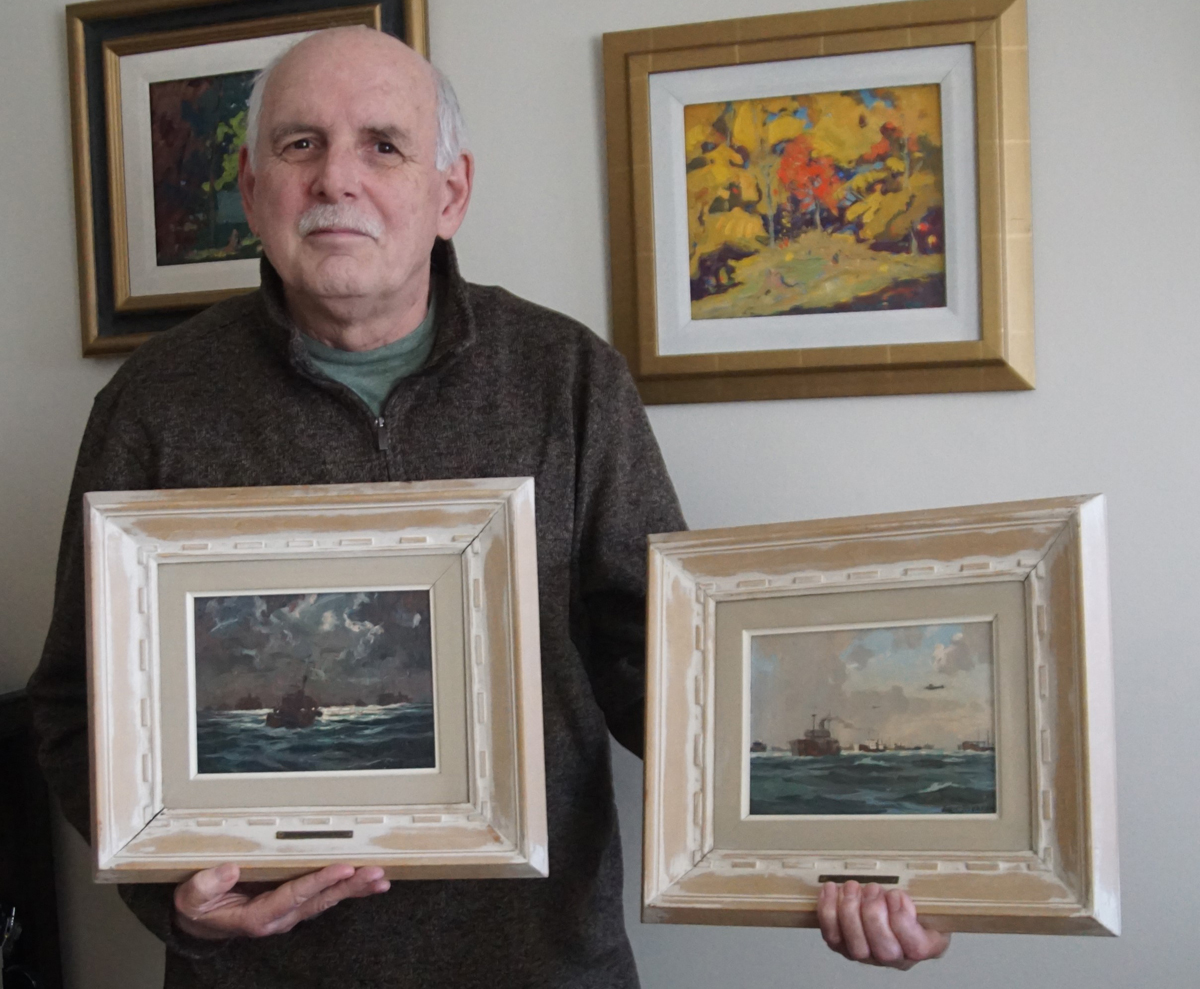
David Emmerson holds his pair of LCdr Riordon paintings numbers 18 and 12 in the Convoy series. It was their purchase in 2020 that got him started on the project of researching their origins.
Peter Mallett,
Staff Writer
—
A retired financial services worker is on a mission to locate 13 missing paintings featuring Canadian warships in the Battle of the Atlantic.
Art enthusiast David Emmerson believes you or someone you know could be in possession of long-lost Battle of the Atlantic paintings by Lieutenant-Commander (LCdr) Eric Riordon, a Canadian Naval Reservist who served during the Battle of the Atlantic.
“It’s turned into a bit of an obsession for me, and I keep finding more and more clues and material,” says Emmerson.
LCdr Riordon joined the Royal Canadian Navy (RCN) in 1940 at the height of the Second World War. His wartime service inspired him to paint a series of 34 miniature naval scenes depicting typical trans-Atlantic convoy manoeuvres during the Battle of the Atlantic.
Emmerson says his fascination with the paintings began when he purchased two of the convoy series paintings at an auction in April 2020. Emmerson bought them because he liked the subject and their look.
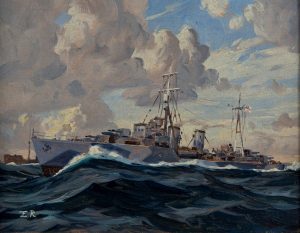
Tribal-class destroyer.
“When I learned about the exhibition and the man behind the paintings, I started to wonder where the other 32 paintings and/or photographs of them were located,” Emmerson says. “I had no idea what I was getting into.”
One of Emmerson’s favourite LCdr Riordon paintings is his fourth in the series. It features an RCN frigate at night during the Battle of the Atlantic.
“Riordon had a faculty for painting moonlight which is amply demonstrated here,” said Emmerson. “It is a beautiful calm picture but there is menace as well, knowing the U-Boats are about and can inflict death and destruction at any moment while the air of menace exists in the frigate itself as it is also a purpose-built killing machine.”
LCdr Riordon’s paintings were displayed and eventually sold after the North Atlantic Convoy Art Exhibit finished its tour in 1952, with many of their whereabouts still unknown. Emmerson says this post-war traveling exhibition must have had an immense impact on the many people across Canada who attended it over 72 years ago.
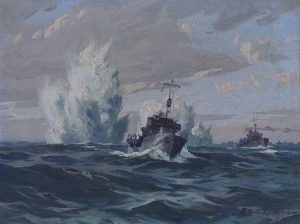
Depth charge attack.
“Many of these exhibition visitors would have been current and former navy personnel at the time,” said Emmerson. “Riordon had credibility with them as he himself was a veteran who served in North Atlantic convoys.”
Now, Emmerson operates an expansive website on LCdr Riordon: ericriordon.ca. It features biographical information and photographic imagery of the artist’s naval paintings. It was the next logical step in Emmerson’s efforts to unlock clues and the tantalizing mystery surrounding the paintings and their whereabouts. The website helped find another missing painting and one picture from the book “Canada’s War At Sea” two weeks ago; it was in the collection of a website visitor from the East Coast.
Emmerson is still on the hunt for the remaining paintings.
“The paintings could be displayed in someone’s home or business, or have been stored away in an attic or basement,” Emmerson says.
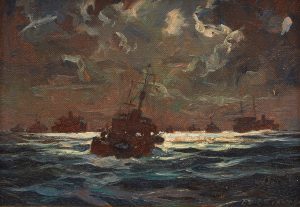
Moonlight convoy.
Convoys on Artist Board
John Eric Benson Riordon was born in St. Catharines, Ont., Dec. 5, 1906, and moved with his family to Montreal two years later. A dropout at McGill University, he later attended art classes at La Grande Chaumière and Académie Julian in Paris from 1932 to 1934. He is more widely known for his landscape art featuring the Quebec wilderness and seascapes.
During his wartime service, LCdr Riordon’s ship, HMCS Kenora, engaged in anti-submarine warfare and protection of convoys during the Battle of the Atlantic. Riordon painted while on shore service. Most of his paintings were oil-based. He cut down 12” x 16” pieces of artist board into 6” x 8” panels.
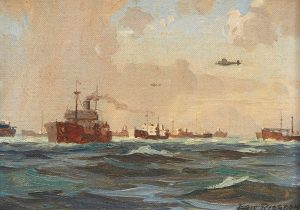
Convoy forming up.
He had a fondness for those small panels and painted many of his landscapes and naval paintings in that format and for two volumes of a book he was contributing to: Canada and the Sea, A Maritime History of Canada by Canadian author and humourist Stephen Leacock, and later Canada and The War at Sea by broadcaster and writer Leslie Roberts.
After the war he held the rank of Lieutenant-Commander in the Naval Reserves.
LCdr Riordon died in 1948.
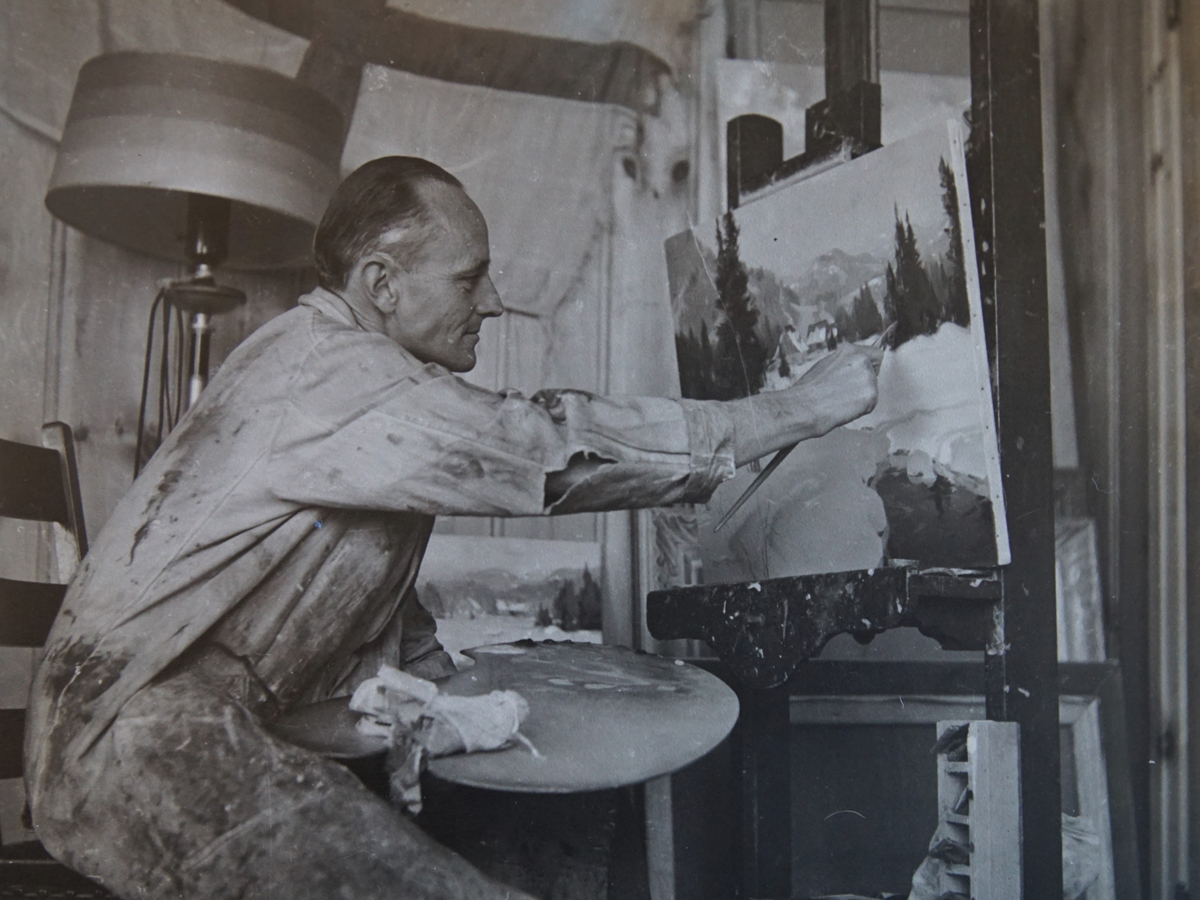
LCdr Eric Riordon in his studio, 1947.
Filed Under: News Release • Top Stories
About the Author:





